Ping An: Special Report on The COVID-19 Epidemic Forecasts (Issue 3)
HONG KONG and SHANGHAI,April 28,2020 --Ping An Insurance (Group) Company of China,Ltd. (hereafter "Ping An",the "Company" or the "Group",HKEX: 02318; SSE: 601318) today published a third report on The COVID-19 Epidemic Forecasts by Ping An Smart City Research Institute,Ping An Macroeconomic Research Institute and Ping An Health Technology Research Institute.
Overview
1. The second wave of global outbreaks: Europe and the U.S. have entered into a moderation period (in line with our forecast on April 8). We predicted that the second wave would reach the peak of new confirmed cases by April 15,with a total of more than 2 million confirmed cases. The actual number of confirmed cases as of April 15 at 12 p.m. China Standard Time was 2,016,305. The U.S.,U.K.,Turkey and Canada reached the peak of new confirmed cases on April 9,April 11,April 12 and April 18 respectively. In particular,the peak of the new confirmed cases of the U.S.,U.K. and Turkey in line with the April 8 forecast,while Canada reached its peak later than predicted.
2. Countries and territories where the epidemic had initially eased in the first outbreak,such as China,still face the risk of a second outbreak.
Since China implemented a strict entry restriction policy on travelers from overseas,there has been no second outbreak. China's overseas entry restrictions have been implemented in four stages. 1) In the low containment measures stage, centralized quarantine was carried out for people entering China with symptoms; 2) In the moderate containment measures stage,all people entering China were quarantined; 3) In the high containment measures stage,entry via air and land ports was restricted on the basis of the above stages; 4) In the complete containment measures stage,most land ports were closed. As of April 20,there was a total of 1,718 imported and related cases (hereinafter referred to as cumulative cases) and no second outbreak.
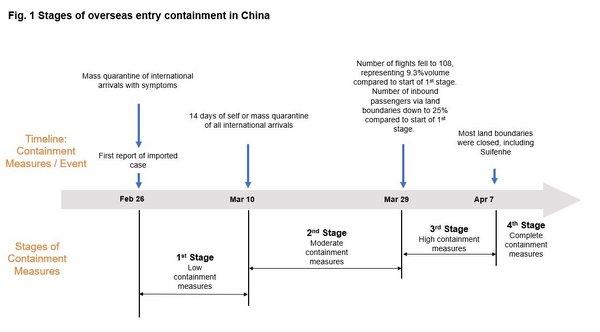
Fig. 1 Stages of overseas entry containment in China
If China had not implemented overseas entry restriction measures after Feb. 26,it is likely that a second outbreak could have occurred in China. Assuming domestic control measures are unchanged,we examined four hypothetical situations for China's imported and related cases based on domestic transmission rates and various overseas entry restriction policies: 1) Maintain a high degree of control (not complete control): the estimated cumulative cases as of April 20 would have been about 5,600 cases; 2) Maintain moderate control: the cumulative cases as of April 20 would have been about 14,000 cases; 3) Maintain low control: the cumulative cases as of April 20 would have been about 25,000 cases; 4) No overseas entry restriction measures,the estimated cumulative cases as of April 20 would have been about 32,000 cases,19 times the actual number.
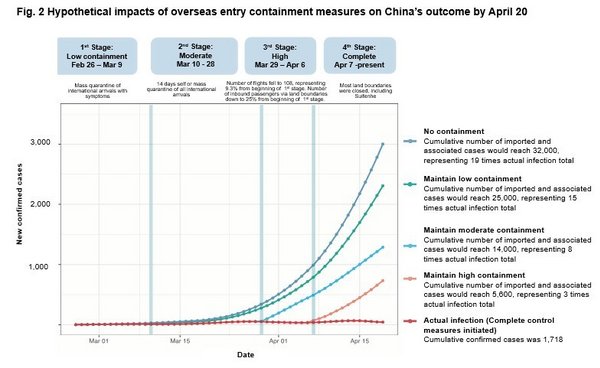
Fig. 2 Hypothetical impacts of overseas entry containment measures on China's outcome by April 20
If China had relaxed its overseas entry restriction policy on April 20,it could have led to a second outbreak in China by May 31. Assuming domestic control measures are unchanged,we have predicted the outcomes of overseas imported cases according to five scenarios of various levels of overseas entry restrictions: 1) Maintain complete control: no second peak is expected to occur. The cumulative cases on May 31 would be 1,800 to 2,100; 2) Downgrade to high control: no second peak is expected to occur,and cumulative cases on May 31 would be more than 4,500 cases; 3) Downgrade to moderate control: the peak of the second wave of new confirmed cases would occur between May 6 and May 10,with a total of more than 6,500 cases on May 31. 4) Downgrade to low control: the peak of the second wave would occur between May 14 and May 18,with a total of over 14,000 cases by May 31. 5) Downgrade to no overseas entry restriction control: the peak of the second wave would be between May 21 and May 25,with a total of over 20,000 cases by May 31.

Fig. 3 Impact of hypothetical changes to containment measures in China,April 20 to May 31
3. Countries and territories where the epidemic initially eased in the first outbreak,such as Singapore,face the risk of a second outbreak.
The number of overseas imported cases and community infection cases surged after March 5 in Singapore,and now it is experiencing a second outbreak. The development of the epidemic in Singapore can be divided into four stages: 1) First outbreak stage: primarily overseas imported cases and locally transmitted cases; 2) Low control overseas entry restriction stage: the number of overseas imported cases surged quickly in Singapore due to the rapid development of the global epidemic after March 5. Singapore conducted testing and quarantine on people coming from key countries and those who displayed COVID-19 symptoms; 3) High control overseas entry restriction stage: all people entering Singapore were quarantined at home after March 19; 4) Second outbreak stage: local community infection cases surged after April 3,leading to the second outbreak. The Singapore government began to implement stricter local containment measures. On April 20,there were 1,426 new confirmed cases,with a total of 8,014 cumulative cases.
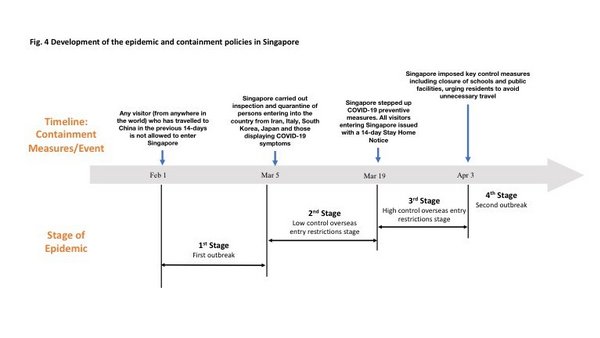
Fig. 4 Development of the epidemic and containment policies in Singapore
On April 20,Singapore may have reached the peak level of new confirmed cases of the second outbreak. It is expected that by May 31,0.3% to 0.5% of Singapore's population will be diagnosed with COVID-19. Since April 3,Singapore has implemented strict containment measures. It is estimated that on April 20,it reached the peak level of new confirmed cases of the second outbreak. We estimate that the cumulative number of confirmed cases in Singapore on May 31 will reach 17,000 to 28,000,which would be 0.29% to 0.48% of the total population.
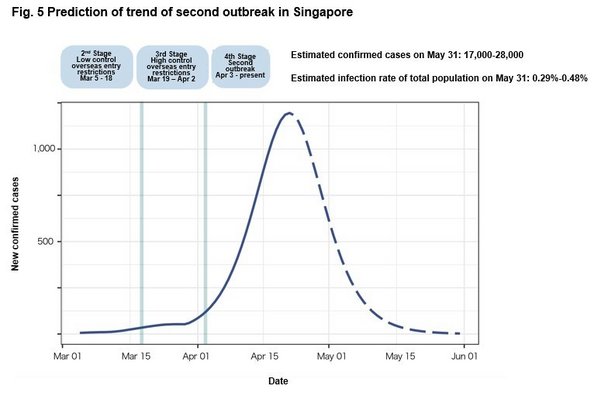
Fig. 5 Prediction of trend of second outbreak in Singapore
4. Focus on the next stage: the risk of a second outbreak and the third wave of global outbreaks,mainly in developing countries.
Countries where the epidemic initially eased are recommended to continue to implement overseas entry restrictions and local containment measures until the global epidemic is generally alleviated. Based on the experiences of China and Singapore mentioned above,countries where the epidemic initially eased should continue to implement overseas entry restriction control – such as restricting the number of people entering the country and centrally isolating people entering,and maintain appropriate local containment measures until the global epidemic situation is generally under control.
Rapid development of the epidemic in Brazil,India,Indonesia and African countries needs further attention. The cumulative confirmed case totals on April 20 were 38,654 cases in Brazil,17,615 cases in India,6,575 cases in Indonesia and 22,992 cases in African countries. Compared to two weeks ago,the cases grew 3.4 times in Brazil,4.1 times in India,2.9 times in Indonesia and 2.3 times in African countries. The number of tests per one million population in these countries (April 20: Brazil 1,373; India 291; Indonesia 154) is also far below the American and European levels (U.S. 11,666; Italy 22,436),and there is still a high risk of a third global outbreak driven by developing countries.
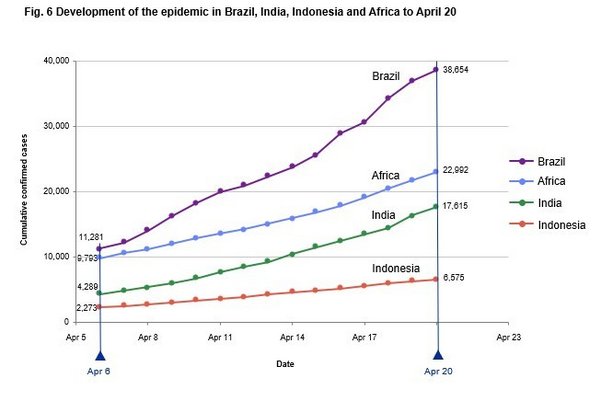
Fig. 6 Development of the epidemic in Brazil,Indonesia and Africa to April 20
Download the full report:Special Report - The COVID-19 Epidemic Forecasts (Issue 3)
About Us
Ping An Insurance (Group) Company of China,Ltd. ("Ping An") is a world-leading technology-powered retail financial services group. With over 200 million retail customers and 516 million Internet users,Ping An is one of the largest financial services companies in the world.
In 2019,Ping An ranked 7th in the Forbes Global 2000 list and 29th on the Fortune Global 500 list. Ping An also ranked 40th in the 2019 WPP Millward Brown BrandZTM Top 100 Most Valuable Global Brands list. For more information,please visit www.pingan.cn.
Ping An Health Technology Research Instituteis a world-leading healthtech research institute,being top-ranked in nine global competitions in the field of healthtech. It has more than 1,000 top scientists and nearly 10,000 developers in China,Boston and San Francisco. Ping An Macroeconomic Research Institute utilizes more than 50 high frequency data points,more than 30 years of historical data and more than 1.5 billion data points,to drive research on "AI + Macro Forecast",to provide insights and methods towards precise macroeconomic trends. Driven by the leading healthtech,Ping An Smart City Research Institute has developed solutions including artificial intelligence (AI)-based disease prediction,medical image recognition,smart medical decision support and treatment and smart chronic disease management,with operations in more than 150 cities in China and Southeast Asia. Its solutions have been adopted by over 10,000 medical institutions.
Over the past two months,Ping An Health Technology Research Institute,Ping An Macroeconomic Research Institute and Ping An Smart City Research Institute have closely followed the developments of the COVID-19 pandemic,and have conducted corresponding analyses and forecasts. The first issue of the overseas epidemic analysis report was published on 21 March 2020 and the second on 7 April 2020. For further information,please contact Dr. Li Xiang through
lixiang453@pingan.com.cn.
Disclaimer
This research report is based on current public information that we consider reliable,but we do not represent it is accurate or complete,and it should not be relied on as such. The information,opinions,estimates and forecasts contained herein are as of the date hereof and are subject to change without prior notification. We seek to update our research as appropriate,but various regulations may prevent us from doing so. Other than certain reports published on a periodic basis,the large majority of reports are published at irregular intervals as appropriate in the analyst's judgment.
Photo - https://photos.prnasia.com/prnh/20200428/2788298-1-a?lang=0
Photo - https://photos.prnasia.com/prnh/20200428/2788298-1-b?lang=0
Photo - https://photos.prnasia.com/prnh/20200428/2788298-1-c?lang=0
Photo - https://photos.prnasia.com/prnh/20200428/2788298-1-d?lang=0
Photo - https://photos.prnasia.com/prnh/20200428/2788298-1-e?lang=0
Photo - https://photos.prnasia.com/prnh/20200428/2788298-1-f?lang=0